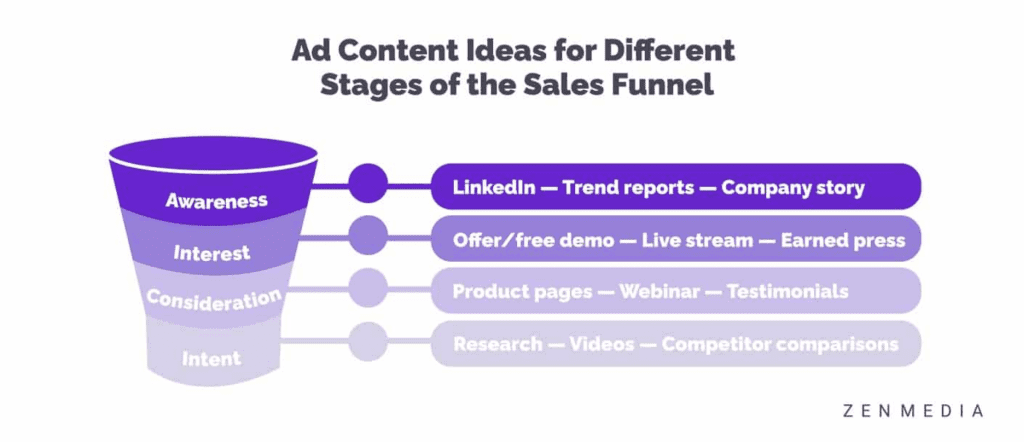It’s no secret that the world of B2B buying has shifted from stuffy boardrooms to the cozy corners of our laptop screens. Thanks to the convenience of technology, buyers can now research and purchase products with just a few clicks. But what does this mean for businesses trying to reach these autonomous buyers?
Well, let’s just say that B2B marketing has become more important than ever. In fact, the more concentrated online buying becomes, the more critical marketing is for businesses. According to a global Bain & Company study, “92% of B2B buyers prefer virtual sales interactions, up 17 percentage points from our survey in May 2020.” The same study also found that more sellers are realizing the effectiveness of virtual sales—now at 79%.
So, if your business isn’t prioritizing its online presence, you’re missing out on a whole lot of potential buyers.
The Autonomous Buyer
Say goodbye to the days of salespeople aggressively pushing their products on potential buyers. Today’s B2B buyers are autonomous creatures, preferring to do their own research online rather than relying on sales professionals.
The majority (80%) of buyers have already set their specifications before talking with a sales rep—and more than a third (35%) have a vendor preference as well. The same study found that buyers tend to prefer digital sources of information, which is at odds with most sellers emphasizing the importance of in-person communication, like at trade shows.
This means businesses must provide the right kind of content for their buyers to consume—informative blogs, engaging social media posts, insightful whitepapers, etc. By doing so, businesses can establish themselves as trusted thought leaders in their industry and gain interest from their target audience. If you want to win over those autonomous buyers, you better start creating content that speaks to their needs and interests.
In addition to creating the right kind of content, businesses must also be prepared to engage with their buyers on their terms. Instead of bombarding potential buyers with sales pitches, companies should provide opportunities for buyers to connect with peers and other buyers who can offer valuable insights and recommendations. This can be accomplished through online communities, forums, and social media groups. By facilitating these connections, businesses can build trust with their buyers and create a loyal following.
However, creating a strong online presence is only half the battle. Companies must also tie their marketing efforts to their sales strategy if they want to succeed in the digital marketplace. This means identifying where potential buyers are in the sales funnel and creating content that addresses their specific needs and pain points. By doing so, businesses can establish themselves as trusted partners and guide their buyers through the purchasing process.
Related Reading: Why Selling No Longer Works – and What B2B Brands Must Do Instead
Scaling Your Marketing Efforts
With online selling becoming the norm for B2B businesses, it’s more important than ever to scale your marketing efforts to meet the increased demand. And tying marketing to sales is critical for B2B companies looking to succeed in the digital marketplace. It’s not enough to simply generate leads or increase brand awareness anymore. Companies need to take a more strategic approach to their digital marketing efforts, focusing on generating quality leads that can be converted into sales.
By aligning marketing efforts with sales goals, B2B companies can ensure that their marketing campaigns effectively target potential customers and engage them in a way that ultimately drives revenue. This means creating content that speaks directly to the pain points of their target audience, using B2B social media marketing to reach buyers where they are, and leveraging data and analytics to continually optimize marketing strategies for maximum impact.
Of course, tying marketing to sales is easier said than done and requires a collaborative effort between marketing and sales teams. But the benefits are well worth the effort, including increased customer engagement, improved lead quality, and, ultimately, more revenue for the business.
While integrating sales and marketing efforts are paramount, how else can a B2B scale its marketing?
Make the most out of your content.
Repurposing your existing content is a great way to scale your B2B content marketing efforts as a B2B leader. Not only does it allow you to leverage what you already have, but it also helps you reach a broader audience without starting from scratch. There are plenty of ways to repurpose content, from turning blog posts into social media snippets to transforming whitepapers into webinars. Doing so allows you to cater to different audience segments and engage with a broader range of potential buyers.
Another key advantage of repurposing content is maximizing the ROI of your content marketing efforts. You’re able to breathe new life into your content and get more value out of it over time. This is especially useful for B2B companies that may have limited resources for creating fresh content.
However, it’s essential to approach content repurposing strategically. You need to carefully consider which content assets to repurpose and how to adapt them for different formats and channels. It’s crucial that the repurposed content remains relevant and valuable to your target audience and aligns with your overall marketing strategy and goals.
Related Reading: Reduce, Reuse, Repurpose, and Recycle Your Content
Use tech to be more efficient.
When it comes to B2B marketing, technology can be a game-changer. By leveraging the right tools and platforms, you can streamline your marketing tactics, save time and resources, and focus on creating high-quality content that resonates with your audience.
The obvious area where technology shines is data analysis and insights. By using analytics tools and platforms, you can better understand your audience, track your performance, and identify areas for improvement. Armed with this information, you can make data-driven decisions that optimize your marketing efforts and drive better results.
But one of the best ways to use technology to your advantage is through automation. Chatbots, for instance, can handle basic buyer inquiries and provide personalized support around the clock, freeing up your team to focus on other important tasks. And automated email campaigns can help you nurture leads and keep your audience engaged with relevant content, all while minimizing manual effort. And, of course, we’re all familiar with ChatGPT by now—but we wouldn’t be harping on it if it weren’t a powerful tool!
Identify where you need marketing by tying your marketing to the sales funnel.
Mapping out your sales funnel and creating a targeted marketing strategy is essential for success in B2B marketing. Gartner found that buying groups spend 27% of the B2B buying journey conducting research independently online. By identifying potential buyers’ unique needs and pain points at each stage of the funnel, you can create tailored content that guides them through the purchasing process and increases the chances of a successful sale.
At the top of the funnel, where prospects are just starting to explore solutions to their problems, creating informative and educational content like blog posts or social media content is crucial. Content that shares your brand story and expertise builds trust with prospects and positions your brand as a thought leader in your industry.
As prospects move further down the funnel and consider specific solutions, it’s time to create more in-depth content like whitepapers or case studies that showcase how your product or service can solve their unique challenges. In these stages, earned media thrives. But that doesn’t mean you need tier-one media hits. B2Bs need a longtail approach to PR. Longtail B2B PR aims to generate many small hits that support the grassroots connection between brands and audiences. A smaller, engaged audience is always better than a larger, disengaged one. And many smaller hits mean higher SEO returns and value far beyond the publication date. For B2B SaaS companies, the middle of the funnel is a great place to offer demos that will hook the buyer.
At the bottom of the funnel, it’s all about creating content that addresses any final concerns or objections prospects may have and provides additional information that helps them make an informed purchasing decision. Now is the time to whip out the competitor comparisons, offer detailed but engaging information, and validate your value proposition with research.
By tailoring your content to the specific needs of your audience at each stage of the sales process, you can guide them smoothly through the funnel and increase your chances of closing a sale. Plus, by analyzing the performance of your content at each stage, you can continuously optimize your marketing efforts to achieve the best possible results.

Related Reading: Why You Should Be Creating an Earlier Buyer Journey
The way businesses buy and sell to each other has changed a lot. With buyers preferring to do their own research and interact with businesses online instead of relying on traditional sales interactions, marketing is more important than ever.
B2Bs need to create content that buyers want to engage with, meet buyers on their own terms, and connect their marketing efforts to sales goals. To succeed in this new landscape, businesses must align their sales and marketing teams and leverage technology to scale their marketing efforts through repurposing content. If a company prioritizes its online presence and adapts to the changes happening in the B2B world, it’ll be better positioned to succeed in today’s digital marketplace.





